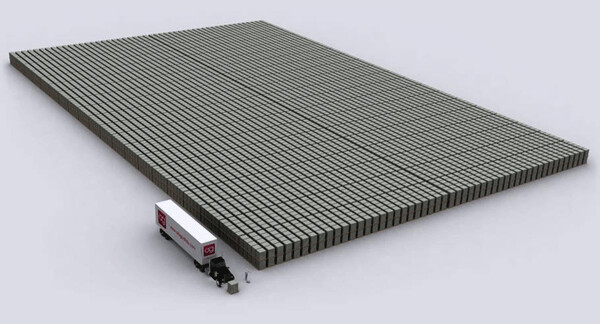News & Articles
Browse all content by date.


Trying to trivialize nuclear weapons the way he makes light of sexual assault, beating up critics, deporting millions, shooting someone in the street, bombing civilians, or torturing suspects, Donald Trump blithely “tweeted” about the US arsenal in December 2016. The Chief Twit typed, “The US must greatly strengthen and expand its nuclear capability until such time as the world comes to its senses regarding nukes.”
Mr. Trump’s handlers were trying to steal thunder that day—Dec. 23rd—from the United Nations General Assembly where most of the world literally was coming to its senses regarding nuclear weapons, voting overwhelming in favor of a resolution to begin negotiating a treaty banning them. The remarkable Treaty on the Prohibition of Nuclear Weapons or Ban Treaty was then adopted by the UNGA on July 7, 2017 (voting 122 to 1), and will take affect when it’s ratified by 50 states. Then last Oct. 6, the International Campaign to Abolish Nuclear Weapons was declared the Nobel Peace Prize winner for its successful effort to see the UN adopt the Ban Treaty. But the US government was having none of it.
The Obama and Trump administrations didn’t just publicly oppose and obstruct progress on the ban treaty, but last October the Congressional Budget Office (CBO) reported on the colossal price tag of the two presidents’ mutual pro-nuclear stampede in the opposite direction. The CBO’s report (“Approaches for Managing the Costs of US Nuclear Forces, 2017 to 2046”) projects that the government’s plan to rebuild the entire US nuclear arsenal from top to bottom, including new warhead production facilities, would cost $1.2 trillion between 2017 and 2046.
As I noted last week, this staggering sum involves contested plans to produce: • new nuclear-armed long-range bombers, land-based missiles, missile-firing submarines, and their propulsion reactors ($772 billion);
• new nuclear cruise missiles;
• the first guided or “smart” gravity H-bomb, and jet fighters to carry them ($25 billion);
• a rebuilt complex of laboratories and production facilities, in Tennessee, New Mexico and Missouri ($261 billion); and
• replacement command and control systems that enable the ongoing threat to use the weapons ($184 billion). Allocating the $1.2 trillion by department, the CBO estimates that $890 billion will go to the Pentagon, and $352 billion to the Department of Energy (DOE) and its bomb-building wing known as the National Nuclear Security Administration (NNSA).
Not $1.2, but $1.74 trillion
While the CBO’s cost estimate is flabbergasting, the agency “lowballed” its estimate by at least $541 billion according to Robert Alvarez, a former DOE senior policy advisor. Writing in the Washington Spectator, Alvarez notes that by excluding the costs of environmental restoration and waste management in the 70-year-old nuclear weapons complex, the CBO “hides” or downplays more than half-a-trillion dollars. The $541 billion “comes from the same congressional spending account” as the $1.2 trillion weapons complex upgrade, Alvarez notes, raising the actual inflation-adjusted total estimate to $1.74 trillion. Clean-up costs were perhaps left out to reduce the hair-raising sticker shock usually prompted by trillions in new federal spending.
Ignoring or belittling the toxic and radioactive legacy of decades of US nuclear weapons production is a longtime practice among weapons proponents. One Livermore National Lab design engineer told me 30 years ago over the phone, “We like to cook. We don’t like to do the dishes.” Ditto the Republican Congress which is weakening clean-up requirements at the plutonium-poisoned bomb plants around the country.
The $1.7 trillion weapons complex “rebuild” was originally proposed by President Obama who reportedly agreed to it as a quid pro quo for Senate Ratification of the New Start Treaty with Russia. The nearly $2,000-billion weapons bonanza appears to be a zero-sum tribute to inflation, since it won’t increase the size of the nuclear arsenal. Another couple of trillion will have to be diverted however, if, as reported by NBS News last Oct. 11, President Trump’s summertime demand for a ten-fold increase of the arsenal size is enacted. It’s only a partial relief that no one takes Trump seriously, and that Secretary of State left the July meeting calling him a “F___ing moron.”
Senate Finance Committee Chair: “We don’t have money anymore”
While debating the Republican’s recent $1.5 trillion tax cut, Utah Senator Orrin Hatch, Chair of the Senate Finance Committee, spoke about the Children’s Health Insurance Program (CHIP) which needed its appropriation renewed after expiring last Oct. 1. CHIP subsidizes health exams, doctor visits, prescriptions and other medical care for children in 9 million low-income families. Mr. Hatch actually said on the record: “[T]he reason CHIP is having trouble is because we don’t have money anymore.” Mr. Hatch had just given away CHIP’s budget times 100 over in a single tax cut gifting industrialists and the super-rich. With proposed austerity budget cuts like the Republicans’ Oct. 2017 budget gouging $1 trillion from Medicaid and nearly $500 billion from Medicare—and over half of federal discretionary funds lavished on the Pentagon—Mr. Hatch must have meant we don’t have money any more except for weapons and war.
The Trump Administration’s official Nuclear Posture Review, a draft of which was leaked to Huffington Post Jan. 11, essentially regurgitates the $1.7 trillion rebuild plan first proposed in April 2016 by Obama. Another trillion-plus dollars being given to weapons contractors doesn’t just defy austerity being imposed elsewhere in the federal budget, it violates currently binding spending laws that will need to be repealed before this bankrupting of the country gets underway.
| Tweet |

